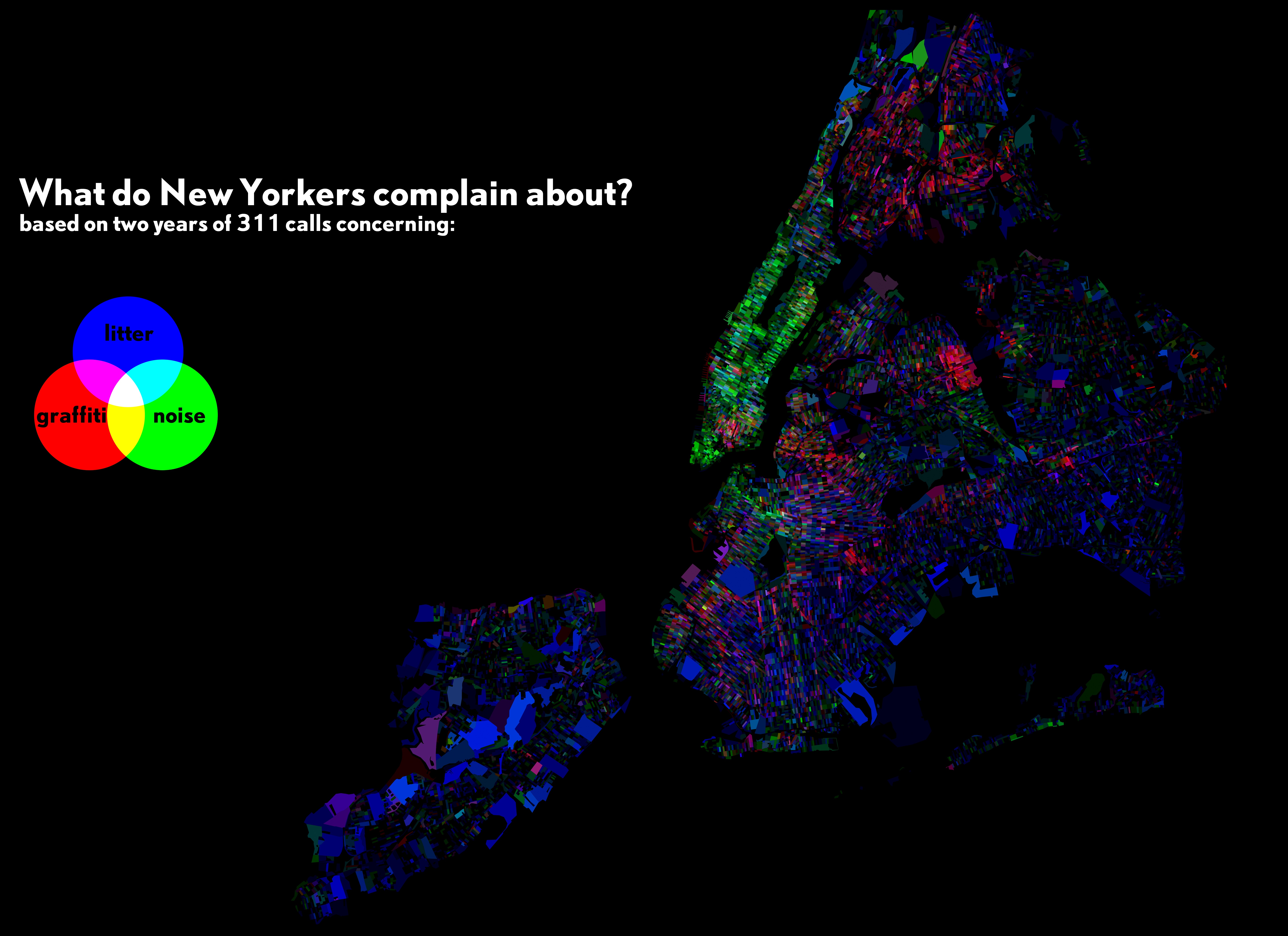
What do New Yorkers complain about?
What do New Yorkers complain about?
Currently I am working on a comparative study of the design factors of citizen feedback systems based on the data they generate. The recent history of these systems is a tale of growing ambition. In the past decade, most large US cities have implemented non-emergency incident reporting systems via telephone helplines, websites, and recently mobile applications. During that time, 311 systems, named after the three-digit telephone number reserved for that purpose, have evolved from service hotlines to public accountability instruments, data sources for urban maintenance and tools for civic engagement.
A small visualization of the New York 311 data that I did past September, keeps surfacing on different blogs. The city of NY publishes all community requests; around 2 Million for the past two years, covering over 100 types of incidents ranging from code violations on construction sites to plumbing issues in public housing projects.
From among the top 15 categories, I selected complaints about noise, litter and graffiti – urban issues that everyone can relate to. They were similar in terms of number of complaints, but very distinct in terms of their spatial patterns.
I used the RGB channels for each respective category, creating a composite that allows a comparison of all three parameters at the same time. Showing more than two parameters is usually very difficult in thematic maps. This strategy creates a surprisingly salient spatial pattern. It seems that Manhattan complains more about noise, the Bronx more about graffiti, and Staten Island more about litter.
The Observer – Shhhh! We’re Gentrifying Here: Mapping the City’s 311 Complaints Oct 4, 2012
The Atlantic Wire – What are New Yorkers complaining about now Oct 5, 2012
Gothamist – New Map Shows Us What New Yorkers Are Bitching About Now Oct 4, 2012
Curbed – A Colorful Kaleidoscope of New Yorkers’ Complaints Oct 4, 2012
Atlantic Cities – Map of the Day: New York’s Geography of Complaining Oct 02, 2012
The City Atlas – Sweet dissatisfaction: using map art to understand NYC’s most common complaints Oct 5, 2012
Animal New York – Beautiful Map of New York City’s 311 Complaints Oct 4, 2012
L Magazine – New Map Shows Neighborhood Gentrification Based On Noise Complaint Frequency Oct 5, 2012
Io9 / Gawker – An interactive map of what New Yorkers complain about, by borough Feb 4, 2013
exp.lore.com Feb 3, 2013
Neatorama – What Do New Yorkers Complain About? Feb 4, 2013
Hosted at Visualizing.org Oct 1, 2012




















